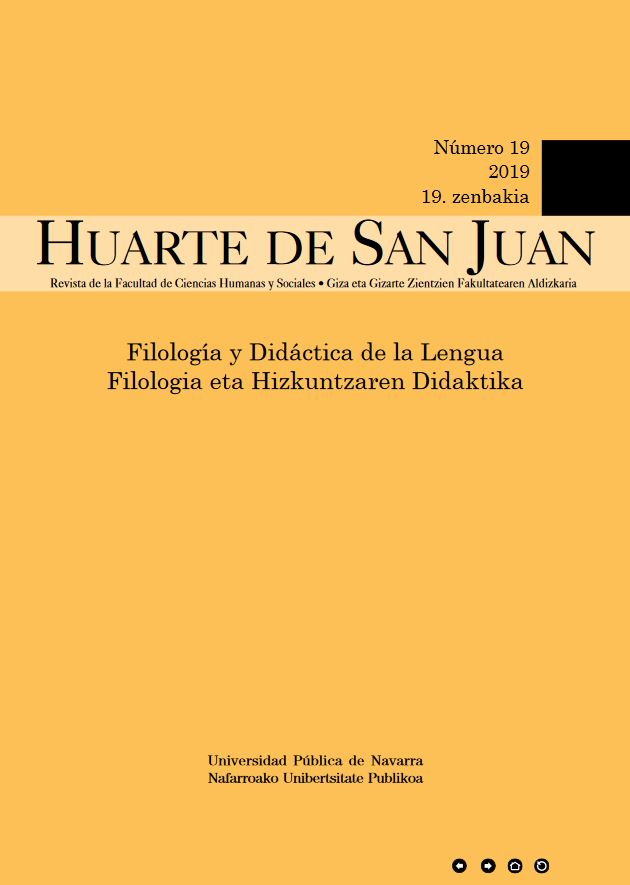The Effectiveness of Translation, Image-based and Video-based Methodologies for Receptive and Productive Vocabulary Acquisition
Keywords:
Vocabulary learning, receptive and productive vocabulary, mage-based vocabulary learning, video-based vocabulary learningAbstract
The aim of this study is to analyse and compare three different methodologies (glossed L1 translation, image-based and video-based) for vocabulary learning taking into account the two kinds of vocabulary knowledge: receptive/passive and productive/active. The participants were 52 high school students aged 12 to 15, who were exposed to all the methodologies. The instruments employed for this research were a pre-test to check previous knowledge, three post-tests, one for each methodology, which were administered immediately after the treat-ment and a week later, and a questionnaire. The results indicate that the image-based method-ology seems to be the most effective in terms of immediate and delayed recall, while all three methodologies are equally effective for receptive vocabulary knowledge, and translation and the image-based methodology slightly better for pro-ductive. Even with similar quantitative results, students expressed a greater preference for the image-based methodology.
Downloads
References
Alqahtani, M. (2015). The importance of vocabulary in language learning and how to be taught. International Journal of Teaching and Education, 3(3), 21-34.
Al-Seghayer, K. (2001). The effect of multimedia annotation modes on L2 vocabu-lary acquisition: A comparative study. Language Learning & Technology, 5(1), 202-232.
Baggett, P. (1989). Understanding visual and verbal messages. Advances in Psychology, 58, 101-124.
Bogaards, P., & Laufer, B. (2004). Vocabulary in a second language: Selection, acquisition, and testing. Amsterdam: John Benjamins Publishing Company.
Brown, H. (2008). Principles of language learning and teaching. White Plains, NY: Pear-son Longman.
Camó, A. C., & Ballester, E. P. (2015). The effects of using L1 translation on young learners’ foreign language vocabulary learning. Elia, 15, 109-134.
Carter, R., & McCarthy, M. (2014). Vocabulary and language teaching. Hoboken: Taylor and Francis.
Collins, A., & Halverson, R. (2010). The second educational revolution: Rethinking education in the age of technology. Journal of Computer Assisted Learning, 26(1), 18-27.
Dastjerdi, H. V., & Farshid, M. (2011). The role of input enhancement in teaching compliments. Journal of Language Teaching and Research, 2(2), 460-466.
Elgort, I. (2018). Technology-Mediated Second Language vocabulary development: A review of trends in research methodology. Calico Journal, 35(1), 1-29.
Filgueira Garro, T. (2014). Modality of input and vocabulary acquisition of English for specific purposes. Unpublished Master Thesis. Retrieved from https://academi-ca-e.unavarra.es/xmlui/handle/2454/15370.
Gómez Pastor, A. (2013). A picture is worth a thousand words: the use of videos in vocabu-lary acquisition. Unpublished Master Thesis. Retrieved from http://academica-e.unavarra.es/xmlui/bitstream/handle/2454/9783/TFM-final.pdf?sequence=1&is-Allowed=y
Griffin, G., & Harley, T. A. (1996). List learning of second language vocabulary. Ap-plied Psycholinguistics, 17, 443-460.
Hashemi, M., & Pourgharib, B. (2013). The effect of visual instruction on new vo-cabularies learning. International Journal of Basic Sciences & Applied Research2(6), 623-627.
Hu, H. P., & Deng, L. J. (2007). Vocabulary acquisition in multimedia environment. US-China Foreign Language, 5(8), 55-59.
Jones, L. (2004). Testing L2 vocabulary recognition and recall using pictorial and written test items. Language Learning and Technology, 8(3), 122-143.
Krashen, S. (2004). Principles and practice in second language acquisition. Oxford: Per-gamon.
Laufer, B. (1998). The development of passive and active vocabulary in a second language: same or different? Applied Linguistics, 19(2), 255-271.
Laufer, B., & Goldstein, Z. (2004). Testing vocabulary knowledge: size, strength, and computer adaptiveness. Language Learning, 54(3), 399-436.
Mashhadi, F., & Jamalifar, G. (2015). Second language vocabulary learning through visual and textual representation. Procedia - Social and Behavioral Sciences, 192, 298-307.
Mayer, R. E. (2001). Multimedia learning. New York: Cambridge University Press.
Meara, P. (1980). Vocabulary acquisition: A neglected aspect of language learning. Language Teaching and Linguistics Abstracts, 13, 221-246.
Paivio, A. (1971). Imagery and verbal processes. New York: Holt, Rinehart, and Win-ston
Pignot-Shahov, V. (2012). Measuring L2 receptive and productive vocabulary knowl-edge. Language Studies Working Papers, 4, 37-45.
Schneider, V. I., Healy, A. F., & Bourne, L. E. (2002). What is learned under difficult conditions is hard to forget: Contextual interference effects in foreign vocab-ulary acquisition, retention and transfer. Journal of Memory and Language, 46,419-440
Stoddard, G. D. (1929). An experiment in verbal learning. Journal of Educational Psychology, 20(6), 452.
Sweller, J. (1994). Cognitive load theory, learning difficulty, and instructional design. Learning and Instruction, 4, 295-312.
Sydorenko, T. (2010). Modality of input and vocabulary acquisition. Language Learn-ing & Technology, 14(2), 50-73.
Talaván, N. (2007). Learning vocabulary through authentic video and subtitles. TESOL-SPAIN Newsletter, 31, 5-8.
Waring, R. (1997). A study of receptive and productive vocabulary learning from word cards. Studies in Foreign Languages and Literature, 21(1), 94-114
Winke, P., Gass, S., & Sydorenko, T. (2010). The effects of captioning videos used for foreign language listening activities. Language Learning & Technology, 14(1), 65-86
Zahedi, Y., & Abdi, M. (2012). The impact of imagery strategy on efl learners’ vo-cabulary learning. Procedia - Social and Behavioral Sciences, 69, 2264-2272.
Downloads
Published
How to Cite
Issue
Section
License
All articles are published under a Creative Commons (BY-NC-ND 4.0) license. Each article will be assigned a DOI.
Authors retain copyright of their work and grant the journal the right to the first publication. Authors can sign additional agreements to non-exclusive distribution of the published version of the article (for example, in an institutional repository) as long as appropriate attribution to the original publication is provided. Articles can be uploaded to institutional repositories immediately after publication.
Electronic distribution of the articles (for example, academic social networks or personal webpages) is allowed and encouraged.
The journal reserves the right to publicise the work in social networks and other electronic means.







